This project uses the vector spatial data model to represent agricultural fields and associated attributes (e.g., crops as polygon objects). In our case, agents are small farm businesses and the model relates farms to fields. Each farm is assigned a number of fields based on proximity to the farmstead and a known range of farm sizes. Fields are assigned crops, which rotate according to standard patterns found in southern Ontario (see Figure 2). To work with the fields and crop types under both conventional and organic management regimes, farm agents draw upon a farm enterprise budget (developed by the Government of Ontario) for data relating to expected yields of various conventional and organic management schemes, market prices and fixed and variable costs.
Information about government programs such as the availability of marketing infrastructure support, as well as farmer characteristics (such as the influence of social networks) is also important in this model. This information is drawn from the literature and is discussed briefly below.
When a simulation is run, each agent draws upon this set of data, applies a set of rules from a knowledge-base (below) and makes a decision about whether or not to convert from conventional to organic farming (or vice versa). In each iteration of the model, all agents apply the data for the fields assigned to them, calculate a variety of variables such as yields, cost and income and apply the rule set, accounting for personal characteristics (e.g., recent experience with their current management regime, and proclivity to change or not) and social network characteristics. Agents remember their experience of previous years and compare the economic performance of their enterprise to others in the sub-watershed.
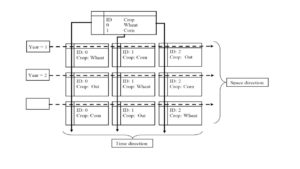
Figure 2- Spatiotemporal variation in a loosely-coupled GIS and ABM structure
An expert or knowledge-based approach has been implemented to create agent rules. The major structure of the knowledge base includes a set of “if…, then…” rules and a range of “thresholds” to control decisions (Figure 3). Adding new rules and new knowledge to the system is an easy task once the agents are defined and the data prepared.
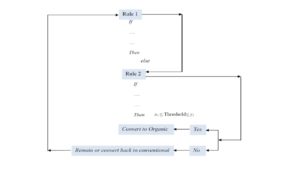
Figure 3- A general representation of rules and relationships of GIS-ABM in a knowledge-based system
In a knowledge-based system, we are able to define many rules that emerge from the experiences of farmers, from the existence (or not) of supportive government policies, and environmental elements. In our model, various experiences and conditions (the application of rules) can increment or decrement a variable, and this is compared to a threshold for action in each iteration. Equation 1 presents a general overview of knowledge-based elements in the GIS-ABM system.
Dpoint (C1,…, Cn) = FAPersVar-1 + FAServices-1 + FAEconomics-1,…, FAPersVar-n + FAServices-n +
FAEconomics- n {x≤Dpoint≤y} (1)
Dpoint is the Decision point value as a product of every year (C1 to Cn) to convert from conventional to organic farming, ranging from x to y.
Where:
n = number of years
x = Threshold value for Dpoint to convert from conventional to organic farming
y = Threshold value for Dpoint to convert back to conventional farming from organic
Agents in the GIS-ABM will look at Dpoint values every year and, based on a series of rules, will change the farming system. Equation 2 presents those overall rules.
If Dpoint (C1, … , Cn) ≥ x then Convert to Organic (2)
or
If Dpoint (C1, … , Cn) ≥ y and ≤ x then Maintain Current Model
else
If Dpoint (C1, … , Cn) ≤ y then Convert to Conventional
Agents in the ABM make decisions based on three groups of variables: Farm Agent personal characteristics (FApersvar); the availability of supportive government programs for organic transition (FAServices), and; a set of economic factors (listed below). These are critical variables reported in the literature about converting farmers (for details, see MacRae et al., 2015):
A. Farm agent characteristics:
- Personal conviction and attitudes toward environment and sustainability [SustValues]
- Personal experience of negative effects of conventional farming [CF_Exper]
- Financial difficulties with the current model of farming (whether conventional or organic) [FDC], defined as a farm agent’s net income $0 or 50% of mean farm incomes in the watershed
- Willingness to innovate [RiskAver]
- Personal exposure to organic farming in the watershed [OF_Exposure](proportion of area (ha) under organic farming)
- Influence of the social network [OF_SocNet] (approximated by the proportion of farms (farm agents) using organic farming practices)
B. Availability of government programs to support organic transition
- Marketing infrastructure support [MKtInf_Support]
- Existence of transition advisory services [TransAdv_Service]
- Access to information-extension services [InfExt_Service]
C. Economic variables
- Existence of government subsidy for organic transition, calculated as a percentage of lost gross revenue during transition [Trans_Subsidy]
- One-time payment for environmental benefits associated with organic transition [Avoided_Cost_Pay]
- Start year of payment [Avoided_Cost_Pay_Y]
- Number of years payments made [Avoided_Cost_Pay_D]
Note that the farm enterprise budget is also calculated and its results act as a “go/no go” gate if a decision point is reached (i.e., the alternative mode of production must be economically viable) and feeds back into some of the parameters above.
The first group (FApersvar) includes six parameterized variables. Each personal characteristic variable has a range from 0 to 100, with 0 for no effect and 100 for the highest effect on the decision to convert to a different agricultural model (conventional or organic). The second group of variables (FAServices) is defined as binary variables. If services are available, then they are assigned a value of one and if unavailable, at 0. These variables are user defined and can be set in combination from 0 to 500. The third group, economic variables, changes the economic situation of the farm enterprise. In our model, a positive economic outlook under a conversion scenario is required for a decision to convert, regardless of the values of variables in the first two groups. A user of the system may modify most of the parameters, such as, decision thresholds, labor costs, crop yields, amount of avoided cost payments, and many more.
The decision value to convert from conventional to organic farming is calculated based on the above factors and then compared with the threshold values and farm economic outlook, as presented below:
Calculation of personal characteristics:
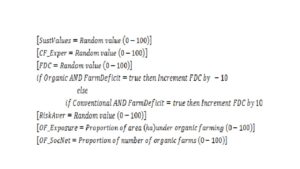
Total value is calculated by adding the above variables and then dividing by 12 to produce a result out of 50.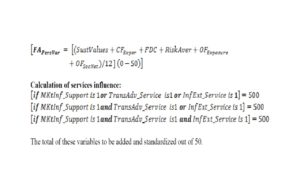
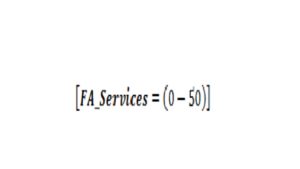
Calculation of economic factors:
[Trans_Subsidy = Existence of government subsidy for organic transition, calculated as a percentage of lost gross revenue during transition ($22.25/ha)]
[Avoided_Cost_Pay = Onetime payment for environmental benefits associated with organic transition ($/ha)]
[Avoided_Cost_Pay_Y = Start year of payment (1-30)]
[Avoided_Cost_Pay_D = Number of years payments made (0-30)]
Organic_rate (OC_rate) = organic_netincome/conventional_netincome
If OC_rate <= 1
FA_economic = 0
Else
If OC_rate >= 2
FA_economic = 100
Else
FA_economic = (OC_rate - 1)*100
FA_economic [0-100]
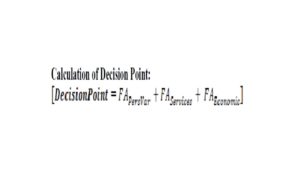
Agents in this project are able to change their farming systems yearly, and the result will map spatial changes of the agents’ decisions. At the same time, GHG and economic indicators are calculated, which are the outputs of agents’ actions.

